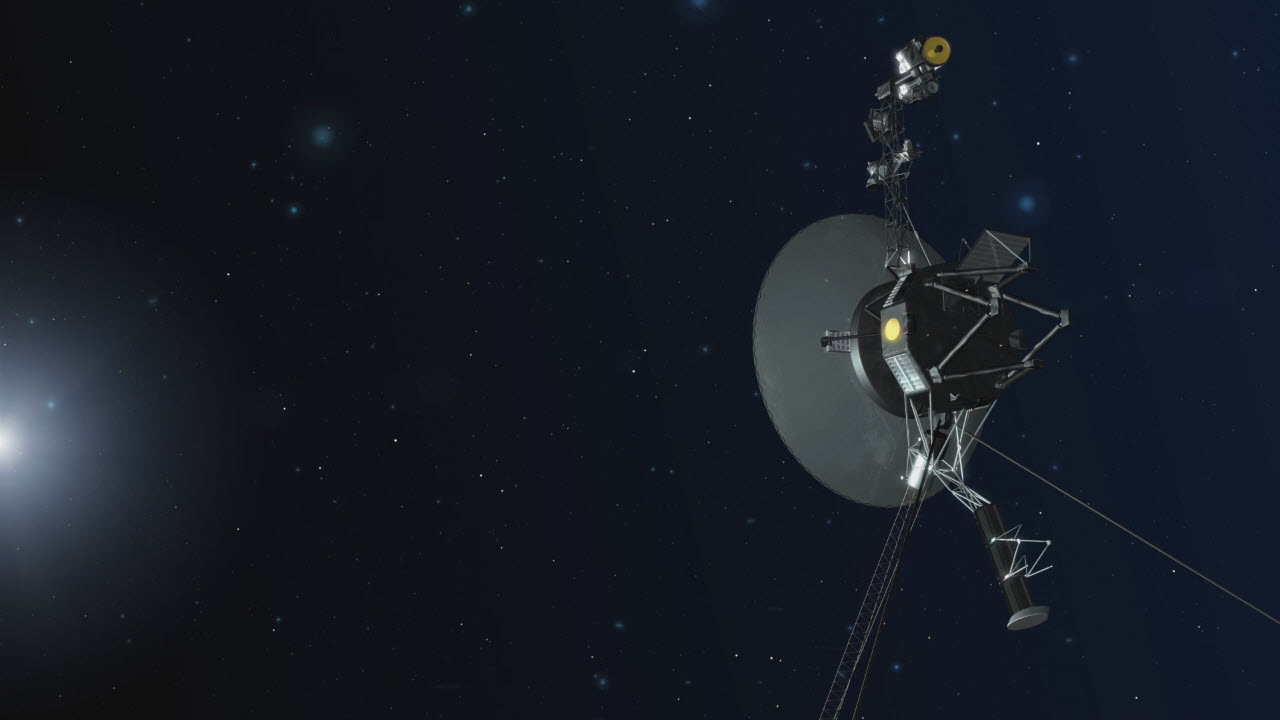Once the spacecraft’s antenna is realigned with Earth, communications should resume.
Once the spacecraft’s antenna is realigned with Earth, communications should resume.
UPDATE, Aug. 4, 2023: NASA has reestablished full communications with Voyager 2.
The agency’s Deep Space Network facility in Canberra, Australia, sent the equivalent of an interstellar “shout” more than 12.3 billion miles (19.9 billion kilometers) to Voyager 2, instructing the spacecraft to reorient itself and turn its antenna back to Earth. With a one-way light time of 18.5 hours for the command to reach Voyager, it took 37 hours for mission controllers to learn whether the command worked. At 12:29 a.m. EDT on Aug. 4, the spacecraft began returning science and telemetry data, indicating it is operating normally and that it remains on its expected trajectory.
UPDATE, Aug. 1, 2023: Using multiple antennas, NASA’s Deep Space Network (DSN) was able to detect a carrier signal from Voyager 2. A carrier signal is what the spacecraft uses to send data back to Earth. The signal is too faint for data to be extracted, but the detection confirms that the spacecraft is still operating. The spacecraft also continues on its expected trajectory. Although the mission expects the spacecraft to point its antenna at Earth in mid-October, the team will attempt to command Voyager sooner, while its antenna is still pointed away from Earth. To do this, a DSN antenna will be used to “shout” the command to Voyager to turn its antenna. This intermediary attempt may not work, in which case the team will wait for the spacecraft to automatically reset its orientation in October.
Editor’s note: The following was posted on NASA’s The Sun Spot blog on July 28.
A series of planned commands sent to NASA’s Voyager 2 spacecraft July 21 inadvertently caused the antenna to point 2 degrees away from Earth. As a result, Voyager 2 is currently unable to receive commands or transmit data back to Earth.
Voyager 2 is located more than 12.3 billion miles (19.9 billion kilometers) from Earth, and this change has interrupted communication between Voyager 2 and the ground antennas of NASA’s Deep Space Network (DSN). Data being sent by the spacecraft is no longer reaching the DSN, and the spacecraft is not receiving commands from ground controllers.
Voyager 2 is programmed to reset its orientation multiple times each year to keep its antenna pointing at Earth; the next reset will occur on Oct. 15, which should enable communication to resume. The mission team expects Voyager 2 to remain on its planned trajectory during the quiet period.
Voyager 1, which is almost 15 billion miles (24 billion kilometers) from Earth, continues to operate normally.
A division of Caltech in Pasadena, NASA’s Jet Propulsion Laboratory built and operates the Voyager spacecraft. The Voyager missions are a part of the NASA Heliophysics System Observatory, sponsored by the Heliophysics Division of the Science Mission Directorate in Washington.
For more information about the Voyager spacecraft, visit:
Media Contact
Calla Cofield
Jet Propulsion Laboratory, Pasadena, Calif.
626-808-2469
calla.e.cofield@jpl.nasa.gov
2023-103



























